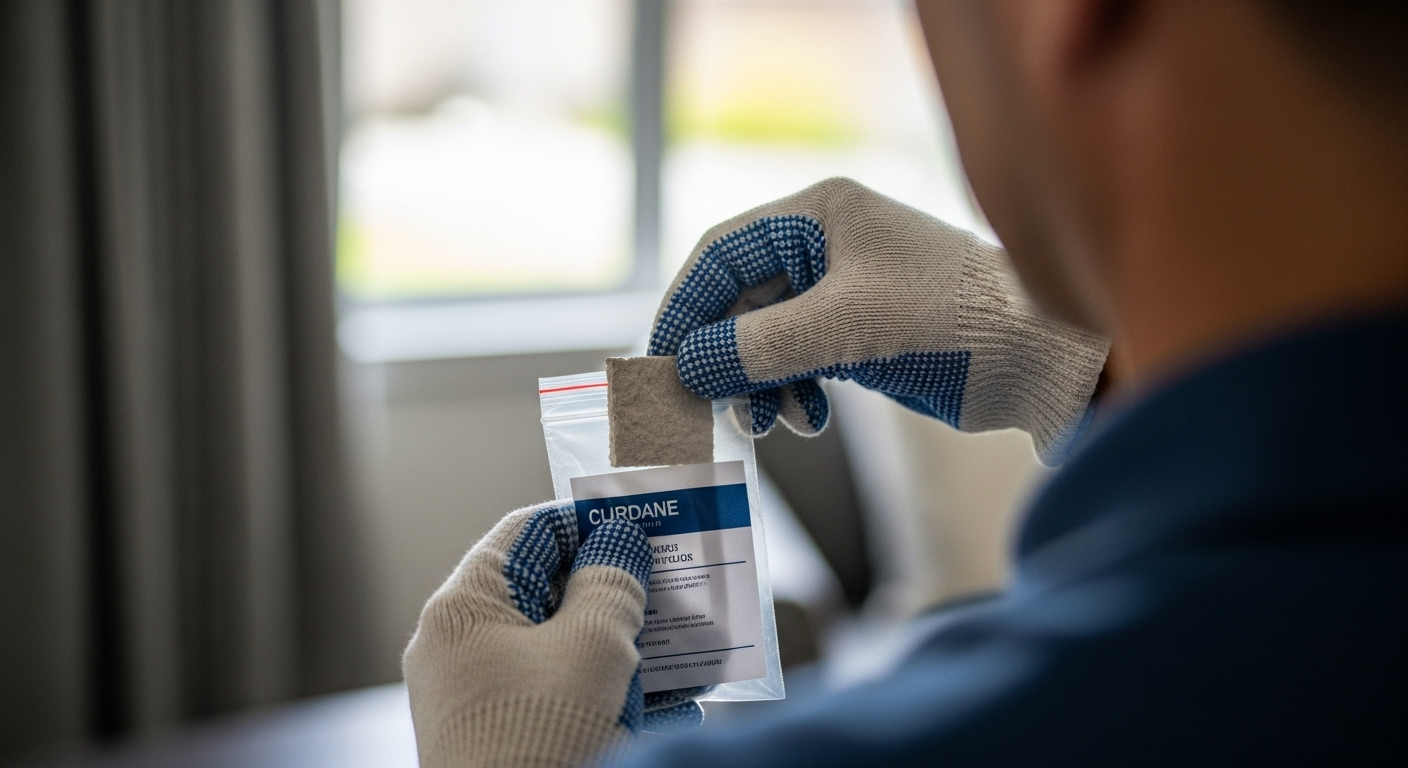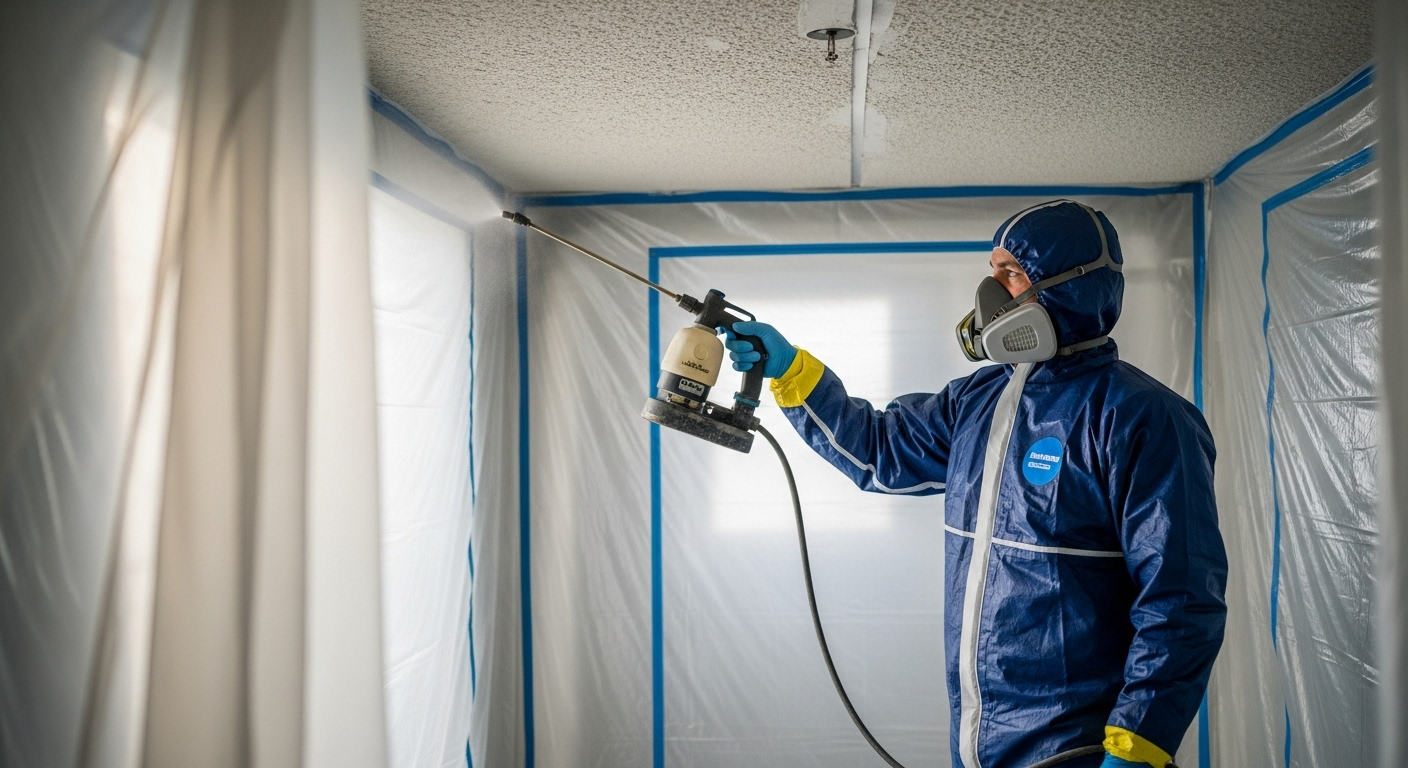Beyond Discovery: A Guide to Asbestos Removal and Remediation Options
Dealing with Asbestos: Your Professional Guide to Asbestos Removal in New Zealand
Key Takeaways
- A positive asbestos test is a trigger for a calm, measured response, not panic. It's a common issue in many NZ properties.
- Property owners have two main remediation strategies: complete asbestos removal or encapsulation. The best choice depends on the material's condition and your future plans.
- DIY asbestos removal is extremely dangerous and, for most types and quantities, illegal in New Zealand. Always use a licensed professional.
- After any removal work, an independent Asbestos Clearance Certificate is a non-negotiable legal requirement to verify the area is safe.
Discovering you have asbestos in your property can feel overwhelming. Your mind might jump to thoughts of massive costs, health risks, and complicated legal requirements. Take a breath. A positive test for asbestos isn’t a catastrophe; it’s a signal to act carefully and correctly.
But it does need to be taken seriously. The stakes are high, as asbestos is New Zealand's leading workplace killer, responsible for an estimated 220 deaths each year. Those numbers show why managing the risk of asbestos exposure is so critical.
In our experience as independent asbestos consultants across New Zealand, the biggest mistakes happen when property owners either panic or, worse, do nothing. This guide is here to walk you through the process, explain your options, and show you how to handle asbestos safely, legally, and cost-effectively.

First, Don't Panic: What to Do When You Suspect Asbestos
If you find material you suspect contains asbestos—perhaps during a renovation or after seeing a damaged textured ceiling—the first rule is simple: stop what you're doing.
Don't touch it, drill it, sand it, or break it. The danger from asbestos comes from inhaling the microscopic fibres that are released when the material is disturbed. If the material is intact and in good condition, the immediate risk is low. Isolate the area if possible and keep people away.
Your next step is to get a definitive answer. You can't identify asbestos just by looking at it. It needs to be tested by a professional. This involves taking a small, controlled sample and sending it to a lab for analysis. This is a fast and affordable way to know exactly what you're dealing with. Professional asbestos testing is the essential first step to forming a safe and effective plan.

The Two Paths: Asbestos Removal vs. Encapsulation
Once you've confirmed you have asbestos-containing material (ACM), you generally have two remediation options. The right choice depends on the type of asbestos, its condition, its location, and your plans for the property (e.g., renovation, demolition, or sale).
Asbestos Removal: The Complete Solution
Asbestos removal is exactly what it sounds like: the physical and permanent removal of the ACM from your property. The material is carefully taken out, packaged according to strict health and safety protocols, and transported to an approved disposal facility.
Pros:
- It's a permanent fix. Once it's gone, it's gone. You have complete peace of mind and no ongoing management responsibilities.
- It increases property value. An asbestos-free property is more attractive to future buyers.
- It's often required. If you're planning a major renovation or demolition that will disturb the ACM, removal is your only legal option.
Cons:
- It's more expensive. The process is labour-intensive and requires specialised equipment and disposal methods.
- It's more disruptive. The work area will need to be fully sealed and vacated during the removal work.
Asbestos Encapsulation: The Management Approach
Encapsulation involves leaving the ACM in place but sealing it with a specialised, impact-resistant coating. This sealant locks the asbestos fibres in, preventing them from becoming airborne. It's a management solution, not a permanent one.
Pros:
- It's more affordable. Encapsulation is typically faster and cheaper than a full removal.
- It's less disruptive. The process is quicker and creates less disturbance to your home or business.
Cons:
- It's not permanent. The encapsulated material will need to be monitored over time for damage.
- It's not always possible. If the ACM is already crumbling, damaged, or in poor condition (known as 'friable' asbestos), encapsulation is not a safe or legal option.
- It must be managed. You'll need an asbestos management plan and will have to disclose its presence if you sell the property.
In our experience, encapsulation can be a great solution for well-maintained, non-friable materials like asbestos cement siding or some types of vinyl flooring where removal would be disproportionately expensive and disruptive. However, for a "set and forget" solution, removal is always the better long-term choice.
Can I Remove Asbestos Myself in NZ?
No, with only one very limited exception. Under WorkSafe NZ regulations, an unlicensed person can only remove up to 10 square metres of non-friable asbestos over the entire course of a project. 'Non-friable' means the asbestos is bonded into a solid material (like asbestos cement sheet) and can't be crumbled into dust by hand pressure. Anything more than that, or any amount of 'friable' asbestos (which is soft and easily crumbled), requires a licensed asbestos removalist.
Attempting a DIY removal is a terrible idea. The risks associated with asbestos exposure are severe. Without the right training, personal protective equipment (PPE), and containment procedures, you can easily release dangerous fibres into the air, contaminating your property and endangering the health of your family for years to come. It’s simply not worth the risk.
The Professional Asbestos Removal Process: What to Expect
When you hire a licensed professional, you're paying for expertise and a safe, compliant process. Here’s what that looks like:
- Survey and Plan: First, a competent person will conduct a survey to identify the location, type, and condition of all ACM. This is essential for planning the removal work safely.
- Containment: The work area is completely sealed off from the rest of the property using heavy-duty plastic sheeting and negative air pressure units to ensure no asbestos fibres can escape.
- Safe Removal: Removalists in full protective gear use specific techniques to keep the ACM damp and remove it in a way that minimises fibre release.
- Decontamination: The entire contained area is meticulously cleaned with specialised HEPA-filter vacuums and wet-wiping techniques.
- Secure Disposal: All asbestos waste is double-bagged, sealed, labelled, and transported to a council-approved landfill licensed to accept hazardous waste.
The Final Step: Why an Independent Clearance Certificate is Crucial
After the removal work is finished and the area has been cleaned, the job isn't done. The final, critical step is a clearance inspection. According to New Zealand's Health and Safety at Work (Asbestos) Regulations 2016, a licensed asbestos removalist cannot issue their own clearance certificate. It must be done by an independent, competent person.
This is where we come in as independent consultants. This separation of duties is designed to protect you, the property owner. It ensures there is no conflict of interest and that the person verifying the safety of the area is not the same person who did the work. This process of obtaining an independent Asbestos Clearance Certificate is your legal guarantee that the removal was successful and the area is safe for reoccupation. It typically involves a thorough visual inspection and, for friable asbestos removal, mandatory air monitoring to confirm the air is free of fibres.
How Much Does Asbestos Removal Cost in NZ?
Costs for asbestos services in New Zealand can vary significantly based on the scope of the project. There's no one-size-fits-all price. The final cost depends on factors like the type of asbestos (friable is more complex and costly to remove than non-friable), the quantity of material, and its accessibility.
The journey always begins with assessment. To understand what you're facing, you need professional eyes on the problem. To get a clear picture of the initial steps, you can start by exploring affordable asbestos consultancy services to understand the costs for surveys, testing, and certification. This provides the data needed to get accurate quotes for any remediation work.
As a guide, here are our starting prices for key consultancy services (all prices exclude GST):
- Asbestos Testing: Starts from $210
- Asbestos Management Survey: Starts from $299
- Asbestos Refurbishment & Demolition Survey: Starts from $349
- Asbestos Air Monitoring: Starts from $299
- Asbestos Clearance Certificate: Starts from $299
Your Partner in Asbestos Management
Finding asbestos can be stressful, but you don't have to navigate it alone. Our role is to be your independent advisor, providing clear, expert guidance from the first test to the final clearance certificate. We help you understand your options, create a compliant management plan, and ensure that any removal work is done to the highest safety standards.
Don't guess when it comes to asbestos. Get the right advice and handle it safely.
_Disclaimer: The information provided in this article is for educational purposes only and is not a substitute for professional advice from a licensed asbestos assessor or removalist. All decisions regarding asbestos management, remediation, and removal should be made in consultation with a qualified professional who can assess your specific situation according to WorkSafe New Zealand guidelines and the Health and Safety at Work Act 2015._
